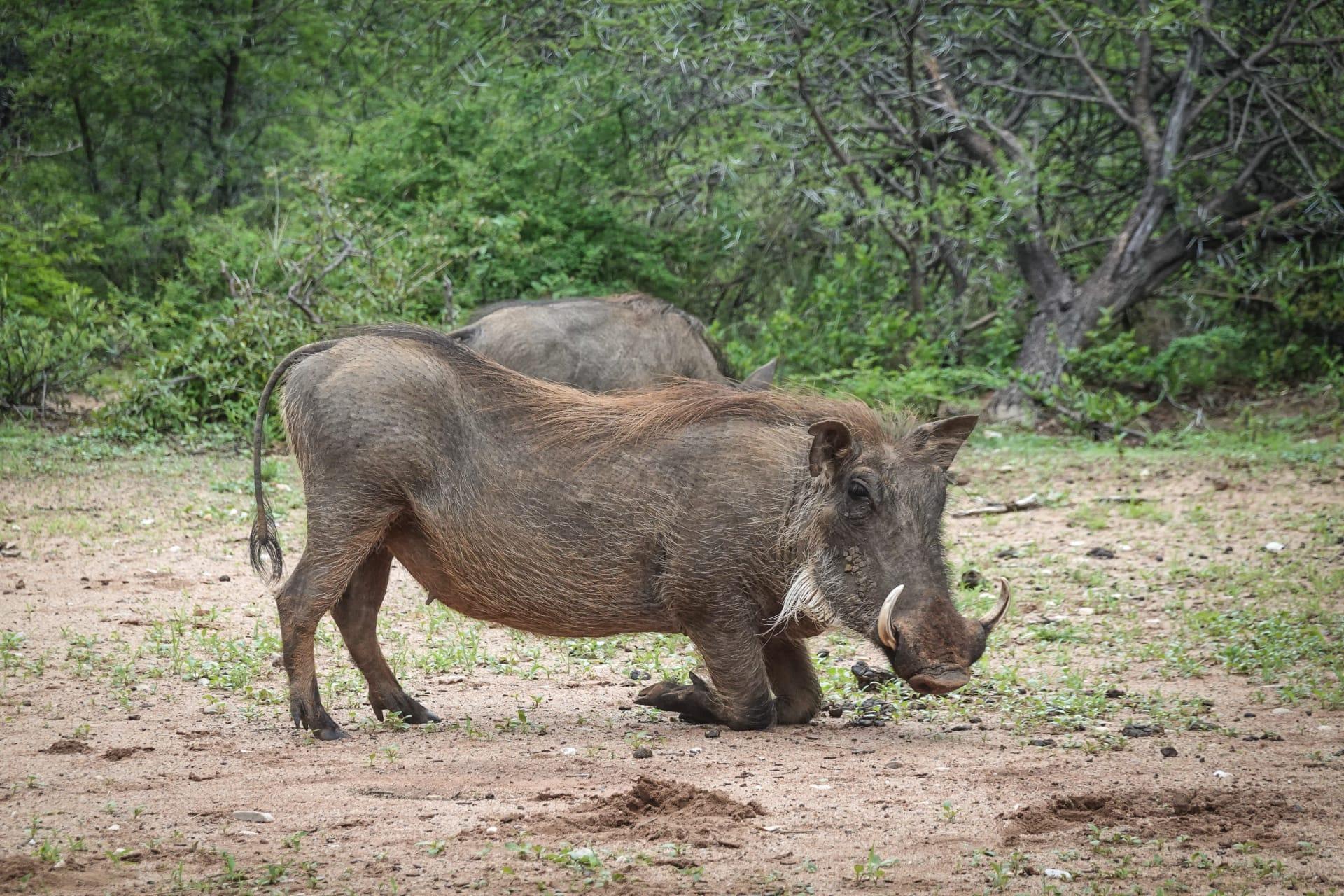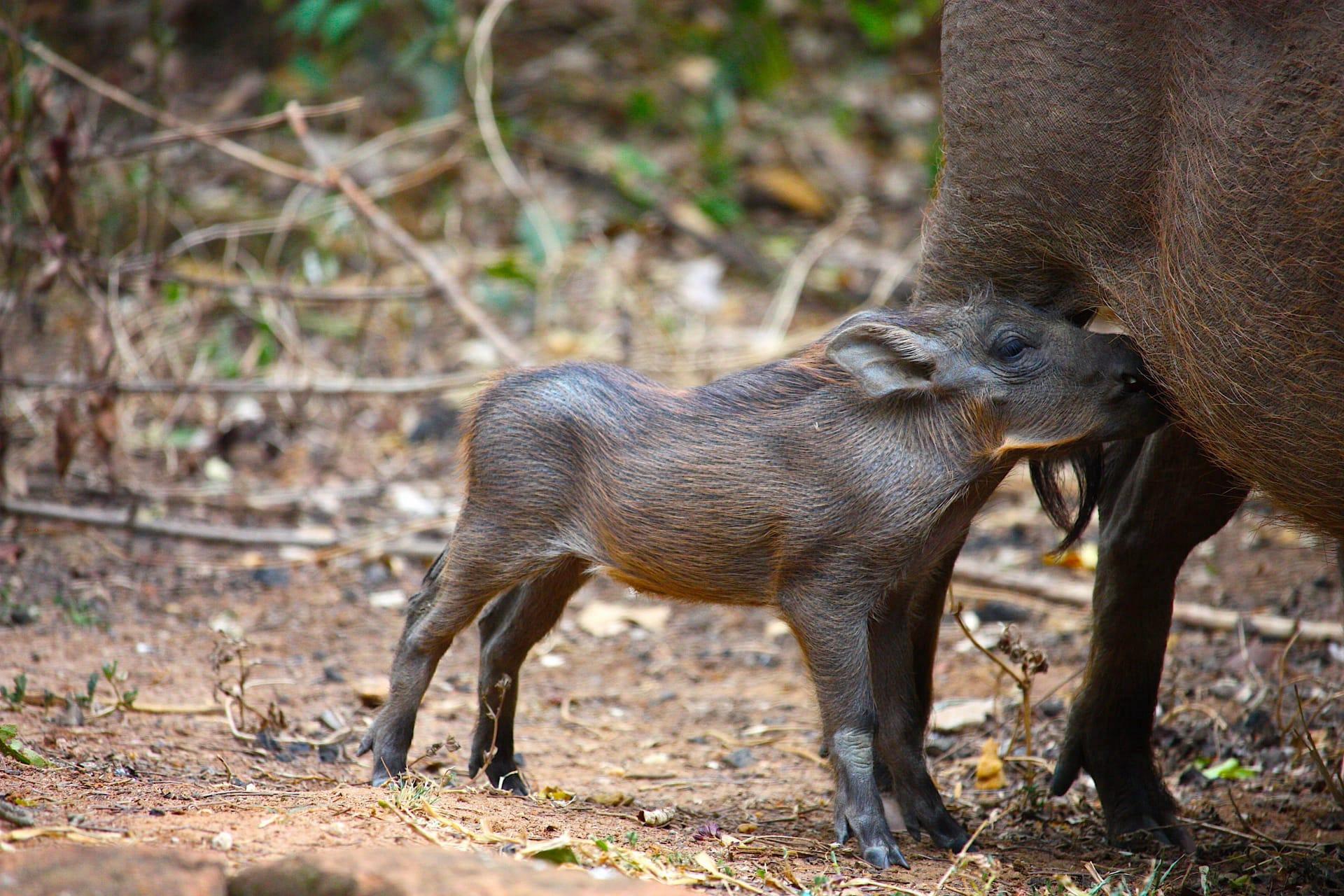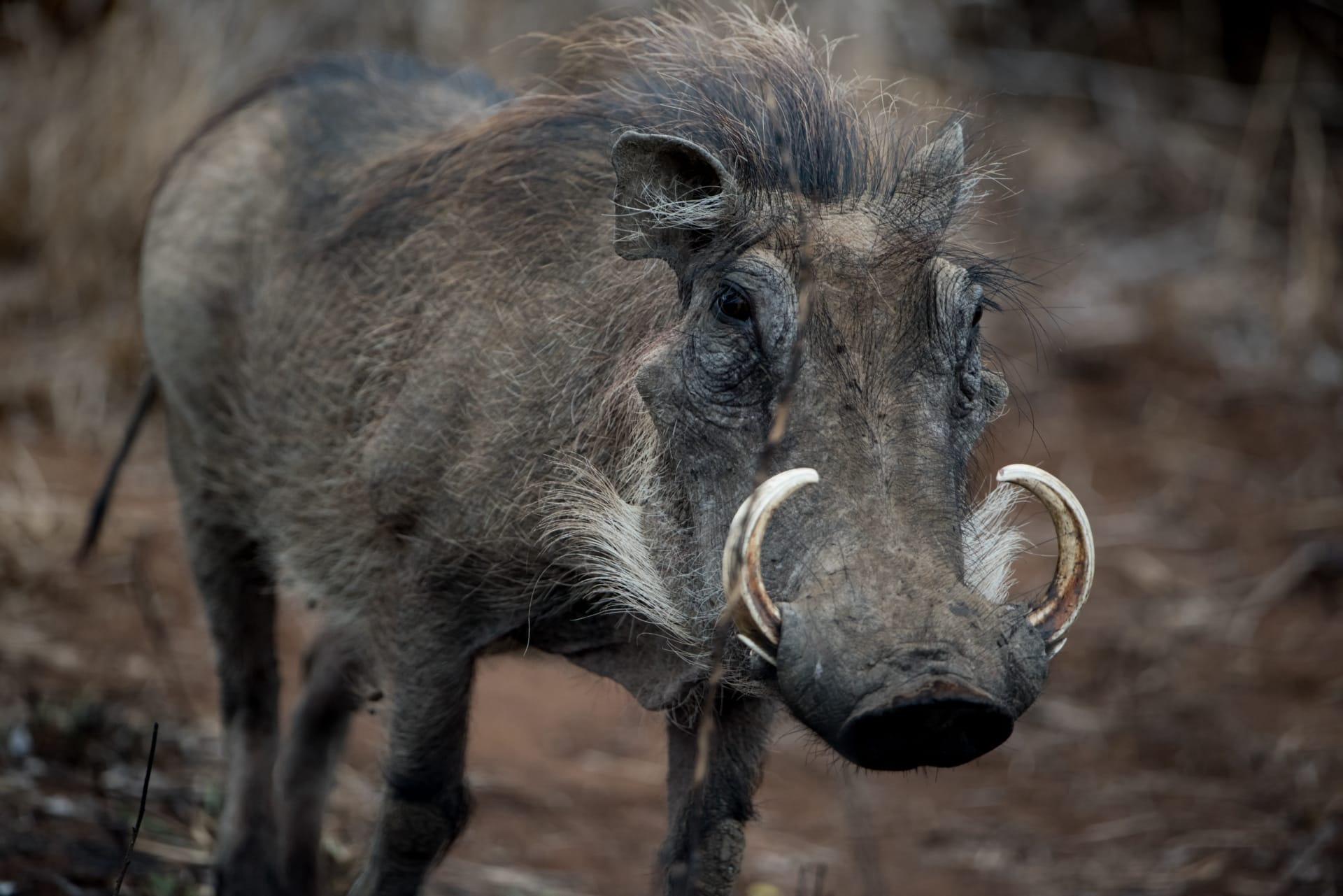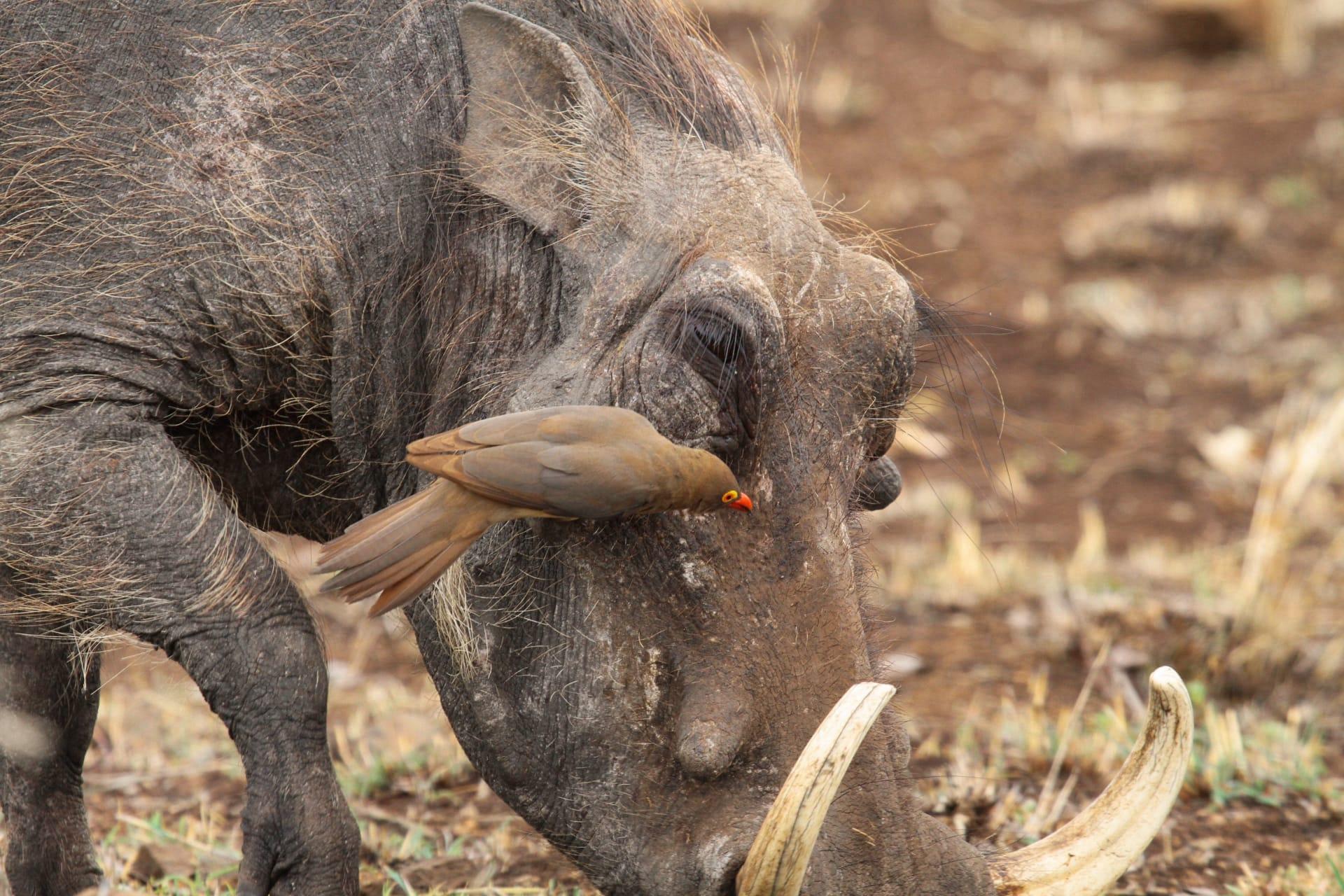Warthog
- Home /
- Mini Encyclopedia /
- Animal /
- Warthog
1
The Warthog, scientifically known as Phacochoerus africanus, belongs to the Suidae family, which includes other pig species. This sturdy creature is a member of the Mammalia class and the order Artiodactyla, characterized by even-toed ungulates. The Warthog is divided into two subspecies: the Common Warthog (Phacochoerus africanus africanus) and the Somali Warthog (Phacochoerus africanus aeliani). Their distinct physical features include prominent tusks and wart-like growths on their faces, hence the name 'Warthog'.
Warthogs are native to sub-Saharan Africa, thriving in grasslands, savannas, and woodlands. They are predominantly found in East Africa, extending to the southern regions, but are notably absent in rainforests and deserts. Their distribution is largely influenced by the availability of water and shelter. Warthogs are not territorial, but they establish home ranges that can vary significantly in size, from 0.6 to 15 square kilometers, depending on environmental conditions and resource availability.

2
Question: Do Warthogs use their tusks for digging?
Answer: Contrary to popular belief, Warthogs do not use their large tusks for digging. These tusks, which can grow up to 25 inches in length, are primarily defensive weapons against predators. For digging, Warthogs use their snouts and very hard, calloused pads on their knees. These adaptations are perfect for rooting in the ground to find food such as bulbs, tubers, and roots. The tusks are also used in male-to-male combat during the mating season.

3
Warthogs have developed unique survival strategies to adapt to the African savanna. One key tactic is their ability to live in a variety of habitats, provided there is water and food. They are not strict grazers or browsers; instead, they are opportunistic omnivores. This dietary flexibility allows them to survive in different conditions. Warthogs are also known for their speed and agility. Despite their bulky appearance, they can run at speeds of up to 30 miles per hour and are also capable swimmers.
Another fascinating survival strategy is their use of burrows. Warthogs are not burrow builders themselves but are experts at modifying abandoned burrows of aardvarks or other animals. They use these burrows for shelter from extreme weather and protection against predators. Remarkably, Warthogs enter their burrows backward, allowing them to use their tusks to defend against intruders effectively.

4
In the ecosystem, Warthogs play a significant role as both prey and as contributors to environmental balance. They serve as an essential food source for large predators such as lions, leopards, and hyenas. This predator-prey relationship is crucial in maintaining the natural balance within their habitat. The presence of Warthogs indicates a healthy predator population and, indirectly, a balanced ecosystem.
Warthogs also contribute to the ecosystem through their feeding habits. Their rooting in the soil while searching for food aids in soil aeration and turnover, which can benefit plant growth. This behavior also helps in seed dispersal and the breakdown of organic material, enriching the soil. Additionally, their use of old burrows can provide habitats for other species, demonstrating their indirect role in supporting biodiversity.

5
Film: "The Secret Life of Warthogs" is a captivating documentary produced in South Africa in 2018. It offers an intimate look into the daily life of Warthogs, showcasing their social structures, survival tactics, and interactions with other savanna wildlife. The film highlights the intelligence and adaptability of these often underestimated animals.
Book: "Warthogs: A Wild Life" by Richard Despard Estes, published in the United States in 2016, offers a comprehensive exploration of the Warthog's behavior, ecology, and conservation. Estes, a renowned biologist, combines scientific research with field observations, providing a deep insight into the lives of these fascinating creatures.
Book: "Savanna Swine: The Warthogs of Africa" authored by Sarah Grant, released in the United Kingdom in 2019, delves into the Warthog's role in African savannas. Grant's work includes detailed descriptions of their habitat, social structures, and the challenges they face due to habitat loss and climate change. The book is acclaimed for its engaging narrative and in-depth research.